Fasst Flexx Enduro Handlebar
| Where To Buy | |||
|---|---|---|---|
Free shipping on orders over $50 (continental U.S. only).
International shipping available. Some exclusions apply. |
|||
Free shipping on orders over $50 (continental U.S. only).
International shipping available. Some exclusions apply. |
|||

Because the sports are similar in many ways, off-road dirt biking is a popular crossover for mountain bikers. It's my favorite hobby, by far. Still high on adrenaline and a sense of accomplishment, I equated my first off-road moto racing experience to riding two hours non-stop on a downhill bike. With terrain coming at you that fast for that long, it's an absolute two-wheeled rush. Not only did it feel similar to riding DH, but the demands on my body were comparable. Two hours of rock and whoop smashing can put a toll on you physically, and for many it can be downright difficult to just hang on to the bars for that long. As a result of some old injuries, my wrists are often sore and my grip strength suffers as races progress. One product designed to help in this situation is the Flexx moto bar – something widely known and used by off-road moto riders. Having proven the concept with over a decade of high-level professional race wins and experience to back it up, Fasst looked to bring the same benefits to mountain bikers when they introduced the Flexx Enduro bar. Moto guys like to ride mountain bikes, too.
As the name suggests, the handlebars are designed to flex. They pivot to direct forces into four tunable elastomers contained inside the bar – two for compression and two for rebound – allowing the bars to provide some give in a similar direction to the fork while remaining precise in the steering direction. How can flex like this be a good thing? Let's dig in.

Strengths | Weaknesses |
|
|
Fasst Flexx Enduro Bar Highlights
- 800mm (31.5-inches) wide
- 25mm (1-inch) rise
- 5° upsweep
- 8° back sweep
- 31.8mm clamp diameter
- American-made UD carbon handles, 7075 aluminum center, and Ti-6Al-4V pins/hardware
- Ultra-soft (blue), soft (red), medium (yellow), and firm (orange) compression and rebound elastomers included
- Weight: 440g (0.97-pounds)
- MSRP: $424.99 USD // Optional $19.99 custom laser engraving



On The Trail
While you can hold the bike steady, wrench on the end of the bar, and see it move a few millimeters, don't expect the parking lot test to reveal much. You need to get on the trail to experience Flexx bars at work.
Equipped with the stock medium (yellow) elastomers, my first ride was telling. On a familiar after work loop that I had ridden the same day, I noted being able to mash on the pedals harder over a rocky section of trail into a natural lip and finally make a trail gap that had been taunting me. Usually, I'll get bounced offline during the short, rocky run-up, but this time things simply clicked and the gap felt natural. From this first ride, it was evident that the bars made a noticeable improvement in smoothing out small chunk and reducing random deflections. Things did feel a little odd when pulling back didn't lift the front end as quickly I'm accustomed, however. Moving to the firm (orange) rebound elastomers for subsequent rides improved bike response during maneuvers that require pulling on the bars, like manuals, picking up for a hop or huck, etc.
These bars drastically reduce jarring terrain feedback, tame oh-shit moments, lessen rider fatigue, and improve control of your bike. While they may weigh a bit more than your standard set of bars, in our eyes they're worth every gram.
In the months that followed I rode with the bars in a huge variety of terrain. Surviving seven straight days of Whistler's endless braking bumps, rocks, and roots aboard a 160mm travel enduro bike is no easy task. With the Fasst Flexx bars though... no worries. At the very end of Crankworx when the trails were at their worst I was still jonesing for another hot lap. Wrist fatigue and arm pump are a thing of the past.



Rough trails have not only become more enjoyable but also more manageable thanks to the bars. Big impacts and holes transmit much fewer jarring sensations to my upper body. When you're leaned over in a turn and you hit a rock at an angle that would typically knock you offline, it's less likely to happen. They truly do help tame those oh shit moments. As a result, I find myself focusing further down the trail and maintaining more momentum with Flexx bars installed. Especially on a smaller bike, I've been impressed by the improvement to handling through rough sections and often feel a bit bad for my wheels and tires. Even on the climbs, the bar is quietly working to lessen jarring impacts.
Interestingly, the addition of the Flexx bar has lead me to some suspension adjustments as well. Many riders set up their forks a bit soft in search of comfort at the bar, when in actuality they're not using the ideal amount of compression damping to keep the chassis stable. Flexx bars smooth the transition between hitting a bump and actually feeling it, allowing you to be comfortable and run proper compression. This results in an altogether more dialed bike. Compared to a traditional setup, I've cranked in 4-7 clicks of fork compression on every bike paired with Flexx bars. Even with added damping, the Flexx bar's ability to smooth out the front end can make the rear end of your bike feel as though it isn't keeping up.

Much like suspension, there's not really a set-and-forget combination of elastomers that is always ideal. What feels perfect in one location may not feel perfect everywhere. In general, when a trail calls for a drastic change to firm up your suspension for added support, consider also firming up the compression elastomers. In Moab, for example, I prefer the dual firm (orange) setup. The same is true on super smooth terrain. My go-to setting for most terrain is medium (yellow) compression and firm (orange) rebound. This combo has served me well on three different trail/enduro bikes.
What about front end feel and knowing what your tire is up to? If you can actually feel the bars move, you need to install firmer elastomers. If you're getting beat up, go lighter. It really is that simple. When tuned properly you only notice beneficial perceptible differences compared to a traditional handlebar setup.
To address the elephant in the room, this is NOT a Girvin FlexStem. The bars do not rotate as they compress. If you're old enough to remember or have experienced that atrocity and call these bars into question, there is no doubt in my mind that your body also has enough miles on it to benefit from the fatigue reduction the Flexx Enduro bar offers.

Things That Could Be Improved
A quick glance at the weaknesses list above will tell you that these bars aren't perfect. Chief among my complaints is that the pivot bolts tend to loosen after a few weeks of hard riding, even with clean threads and blue Loctite. Fasst claims a new Loctite compound may solve this. Routinely checking bolt torque must be something you're willing to do if you own these bars.
At 440g (0.97-pound), the bars are also undeniably heavy. In a Vital MTB poll conducted in 2018, we asked, "How much weight are you willing to add to your bike to gain a major performance benefit?" Of close to 800 responses, 75% were willing to add more than 250g and 82.5% were willing to add more than 100g. Compared to a traditional carbon or aluminum bar, expect to add 100-200g to your bike.
Finally, like many USA-made products, Fasst Flexx bars are flat out expensive. Thanks to a material change from carbon to aluminum at the center of the bar they've come down from $500 to $425 in the last year.
Long Term Durability
With over a year of ride time, Fasst's Flexx Enduro bars continue to deliver consistent performance. There is no play at the pivot, all bonds are secure, and the carbon is in good shape. Obey the hardware torque specs and tighten/loosen using the allens (not the tiny torx) and you'll be good to go.
Riders in tune with their setup can expect to get around a year out of a set of elastomers, and replacement kits run $14. The compression elastomers can also be spun 180-degrees to extend their life. Fasst offers a Factory-Fresh kit involving disassembly, cleaning, pivot service, and reassembly that can be done on your own or by Fasst. The bars are backed by a 30-day guarantee, 5-year warranty, and lifetime crash replacement program.

What's The Bottom Line?
It turns out guys charging harder for longer periods of time know a thing or two about chassis control and fatigue management. Fasst, a brand with years of experience in the moto world, has brought their moto-born technology to mountain bikes. These bars work as intended; extensive ride time and back-to-back tests have proven the company's claims to be true.
The Flexx handlebar is not for the person who rails smooth berms day in and day out. They're pricey as hell and aren't without their flaws. For many, however, the upsides will far outweigh any shortcomings.
Whether it's back-to-back days of endless vert or a big effort in rockier terrain, the fatigue reduction provided by the Flexx Enduro handlebar has allowed me to ride in full control for longer periods of time. For those with previous injuries, these bars will allow you to charge like you used to. No injuries? Still young? Every rider will benefit from improved handling in rough terrain. Though some new ideas in the bar space may challenge the status quo, I can confidently say Flexx bars offer a ride feel that is unparalleled by any traditional carbon bar.
After nine months of testing Vital MTB named the Fasst Flexx Enduro handlebar a podium finisher for the 2018 Component of the Year Shreddy Award, and now, at the fifteen-month mark, my impressions still hold true. With some care and attention, these bars are in it for the long haul. They're applicable to everything from gravel grinders to DH bikes, and in my experience can make short to mid-travel bikes an absolute riot.
Head over to www.fasstmtb.com for more details.
About The Reviewer
Brandon Turman - Age: 32 // Years Riding: 17 // Height: 5'10" (1.78m) // Weight: 170-pounds (77.1kg)
"I like to have fun, pop off the bonus lines on the sides of the trail, get aggressive when I feel in tune with a bike, and really mash on the pedals and open it up when pointed downhill." Formerly a mechanical engineer and Pro downhill racer, Brandon brings a unique perspective to the testing game as Vital MTB's resident product guy. He has on-trail familiarity with nearly every new innovation in our sport from the past several years and a really good feel for what’s what.
Photos by Brandon Turman, Miguel Santana, and Courtney Steen
1 member reviews

Reduces arm pump significantly
Tunability per riders preference
Allows riders to ride longer and faster
Surprisingly durable
Made in America
Pricey (but comes with a 30 day Buy-Back guarantee)
Only offered in 25mm rise and 31.8mm bar clamp diameter
The industry has come a long way since the 80’s and 90’s. From hucking those fully rigid Specialized Hard Rocks off dirt lot jumps to 37lb carbon fiber e-bikes, oh how things have changed. Components have gotten stiffer, frames have gotten lighter, and modern suspension is pushing riders further than we ever thought possible.
Regardless of all these improvements, things can always get better. Every R&D project has one end goal in common and that’s producing the biggest, nastiest grins for riders, you know, the ones that let everyone know they completely cleaned the toughest sections of trails all while making it look easy. Over the years, several companies have blown open the door of limitations and have created these moments.
One of these limitations that the industry is still fighting with is improving small-bump sensitivity and making arm-pump a thing of the past. Over the last few years big name suspension companies have made great leaps in making this happen. Fox’s EVOL and Rock Shox’s Debonair air springs with increased the negative volumes have made trail chatter much easier on the body but the harsh reality is, arm-pump is still alive and strong. Other, smaller companies such as Vorsprung have gone to the drawing board to see what they can come up with to contribute to making the horrific ‘rigor mortis finger peeling’ at the bottom of the trail less, well, rigor mortisy.
This is where rider-owned, USA based Fasst Company comes to the table. Having established a reputable presence in the moto industry, they have expanded their focus on mountain bikes and have released a mountain bike version of their ever-unique Flexx Bars: available in carbon and soon-to-be alloy. The Flexx bar bridges the gap between handlebars and suspension forks and is said to reduce the nagging pain that arm pump produces. These bars are also claimed to increase a rider's stamina in the saddle (sorry, not in the bedroom) and ultimately allows a rider to ride harder for longer. Over the past 2 years I’ve been putting this claim to the test and this is what I’ve found.

First impression:
Starting at the heart of their design, the Flexx bar is made of three separate pieces, the centered base and two external handles, which pivot or ‘flex’ when the rider comes in contact with an object while out on the trail. Contrary to my initial thoughts, this movement is strictly linear and when positioned in parallel to the axel path of the fork creates a seamlessly smooth collaboration of the two components.
How it works-
Diving deeper into the mechanism, you’ll find multiple elastomers sandwiched within this pivot point on each side of the bar. The larger elastomer which can be seen from above, looking down on the bar and is dubbed the ‘compression’ elastomer while the smaller elastomer can be seen from below and is dubbed the ‘rebound’ or ‘pull back’ elastomer. These two elastomers working around a simple pivot point dramatically reduces the static friction suspension engineers have been battling to minimize since the creation of the telescopic fork. Although it’s older technology utilized in a new way, I feel you would be hard-press to find a physicist that would disagree with the reduction in friction the Flexx bar offers. Granted, this is all in theory and will need to be tested when the rubber hits the dirt.
Tunability-
Similar to how you’re able to tune a fork’s compression and rebound setting, Fasst Company allows you to fine tune the flex of their bars. Every Flexx bar comes with 4 different elastomer fittings that vary in density which affects how soft or firm the bars ride.

From softest to hardest the color-code goes as follows: Blue, Red, Yellow, Orange. Choosing which elastomer to run is not based solely on a rider’s weight but also rider preference. Because of this you won’t find any tuning charts on their website. Fasst Company encouraged you to play around with them to find the best set up for you. For those too antsy to fool around with tuning, the bars come standard with the yellow medium/stiff elastomer installed.



Mixing this unique ‘flex’ technology with premium materials like American-made UD carbon and titanium hardware, it’s easy to see that Fasst company didn’t skimp out on any of the finer detail. If customization has your name written all over it, contact Fasst company and they’ll be able to custom laser engrain your name, logo, or even an image of your pet lizard onto the bars free of charge.

In regards to weight, the Flexx bar’s certainly aren’t winning any Biggest Loser contests. Coming in at 476 grams (800mm bar uncut), they are roughly twice the weight of a higher end carbon bar. This instantly will turn off a handful or riders but with the industry pushing towards performance over weight (ex: coil shocks and forks are coming back) each additional gram of the Flexx bar could be worth it’s weight in gold.
On the Trail:
Enough about the specs. How does the Flexx bar ride?! I chose to take my maiden voyage on the iconic Zen trail in St. George, Utah. This trail is a mixture of dirt, loose rock, and solid rock slabs. The terrain and technicality of the trail made it an ideal playground for the initial testing. Also, being a trail I’ve ridden countless times, I’d be able to see how the Flexx bar really compared to conventional handlebars.
On the climb to the top, I noticed quite quickly how the Flexx bar took the edge of square-edged rocks. With my heart rate peaking and lactic acid building picking the best line choices and greasing the technical climbs is easier said than done. Some of these rock shelves which have proven to be momentum killers in the past became a bit more forgiving thanks to the damping these bars offered.
Before long I had made it to the top. Dropping the post and a few flicks of suspension dials I was ready to see what the Flexx bar was made of. While descending the bars ate up an incredible amount of vibration that my fork (a Marzocchi Z1 w/ Vorsprung Luftkappe installed) and traditional handlebar weren’t capable of doing on their own. Blasting through threw rocky berms and transferring from slab to slab my attention was 100% focused on fun and not hand fatigue. Reaching the bottom from what felt like one of my quickest descents I was quite surprised how unaffected my hands were compared to previous rides without the Flexx bar. After some serious contemplation on a second lap my legs (not my hands) called it a day and I headed out with a massive grin on my face. What a ride to remember.
Next up was a slightly rougher trail called Grafton DH. This is another iconic trail in southern Utah and is the little brother to the infamous Flying Monkey trail that houses King Kong himself. Having ridden this trail a fair amount I felt this would be a great environment to truly gauge how much the Flexx bar had to offer in regards to performance. The trail starts out fairly smooth with dirt single track but drops into rather large rocks half way through.

Dual crown forks are commonly found on this trail and really shine when getting into this latter half of the trail. That being said, it can be a real blast and challenge on shorter travel single crown bikes. Riding the trail on such bikes can be quite taxing on the body however. On this lower section, letting off the brakes and opening things up the Flexx bar really came to life. So much of the hand jarring impacts were muted which made for a truly epic riding experience.

These bars quickly and confidently got me riding at 100% of my abilities and maybe a little past that to be honest. Moments where I found myself feathering the brakes to stay in control in the past were now ridden fully open. This resulted in an increase in speed, control and stability. Similar to the less rugged Zen trail, I left Grafton DH with a fresh set of hands and a massive grin on my face.
Lastly, I wanted to see how well the Flexx bar handled big hitting (at least by my standards) freeride situations. With rampage venues so close I was able to take the these bars down some ridge lines and off some larger jumps and drops, features typically not found on our average trail systems. I started with Lunch Line at the old rampage site. The bars held strong through all the rollers and even some drops measuring in the double digits. Riding down this terrain, I felt I got the Flexx bar close to if not fully maxed out on their linear movement. Despite doing so they never felt unnatural or flimsy. Leaving the venue, I gained a new confidence that these bars will handle everything I could throw at them.
Riding Zen open my eyes to how well the Flexx bar dampens high speed/small bump chatter. Grafton DH showed me that they are just as impressive at eating up rougher terrain. And sending it during freeride applications left me with confidence that the bars will hold up to anything I’m willing to man-up and hit.
Concerns:
Although the Flexx Bar has earned my trust over the past 2 years, there were some initial concerns I had with these bars.
#1. The Flexx bar is made up of three separate pieces which are designed to pivot or ‘flex’ during a compression. Coming from a fully rigid traditional bar, I was concerned this movement was going to either make my bars feel like a wet noodle and/or possibly break at this pivot.
Looking at the bolt and pivot point of these bars, it seems like an awful lot of stress to put in such a small part of the bar. Taking the bar apart however, the real strength of this hinge is revealed.
There’s a great amount of overlap inside this pivot point which limits unwanted forward or back movement. Pushing the bars to my limits, I’ve been blown away with how they’re able to take away so much trail chatter while feeling solid at the same time.
#2. These bars utilize elastomers, a key material found in the 90’s which has all but nearly been eradicated from the suspension world. Is this material still relevant?
The flex of these bars is created by the compression of elastomers. Yes, this is a material which has been phased in and out of the suspension world but does it mean it’s outdated for this application? I don’t believe so. The design of the Flexx bar is simplistic in nature and the elastomer fittings do their job properly and efficiently. Unlike carbon construction found in conventional handlebars which offer a ‘one flex fits all’, the Flexx bar can be adjusted to fit the rider’s preference. Who’d ever thought we’d ever be able to fine tune a handlebar? With the Flexx Bar you can.
And finally #3. Price. With a price tag of $425 it seems to be a huge investment for a product that many people are unsure about. With all the time I’ve spent with these bars here is what I’ve learned.
As with any product in the biking industry, price is a factor. At $425 retail, the Flexx bar certainly is chump change. To put the price into perspective however if you’re looking to upgrade your suspension fork for something that has better small bump sensitivity, chances are you won’t be able to do that for under $500. The Flexx bar makes older forks feel better than they did when they were new and they make the newest of forks feel even smoother. Fasst Company understand the price is a major hurdle and as a result offer a 30-day buy back program. If you’re not stoked on what the Flexx bar has to offer, send it back to Fasst Company and they’ll give you a full refund, all you’ll be out is $6-10 shipping to get the product back to them.
More recently, Fasst Co has been working on an alloy version of their Flexx Bar. That being said, the price should come down a fair amount for those who want to benefit from their performance but lack the budget in order to do so.
So the question stands: Who is the Flexx bar for?
Initially I thought the Flexx bar was primarily for riders battling with or returning from an upper body injury. With my experience on these bars I agree fully that this type or rider would strongly benefit greatly while using them. The harder I pushed the bars the more I realized they cover a much larger spectrum of riders however. At the end of the day I’d ultimately recommend the Flexx bar to anyone who ever puts a foot down on the trail due to arm pump and hand fatigue; so that’s pretty much everyone.
Durability:
Since my initial impressions I’ve had these bars on variety of bike and forks and have continued to push these bars as hard as I was willing to push them. From local rips to weekend warrior trips to places like Teton Pass in Wilson WY, to the rooty and technical black diamond trails and breaking bump berms of Whistler BC, this Flexx bar has certainly seen their fair share of use and abuse.

Their performance and durability haven’t had a single day of compromisation or failure.
Over the past 2 years of using the Flexx bar, I have had zero issues with durability. Even during an involuntary ejection while riding down a roller coaster of a ridge line. I found myself riding my front end into a slightly elevated hillside which my bike bounced over and continued bouncing down a few more ledges.

Picking myself up and doing a damage evaluation on myself along with my bike, I was glad to see the Flexx bar came out unscathed although my saddle with carbon rails did not. Fasst Company has surprised me greatly with how solid and problem-free these bars have been.
Things that could be improved:
Although I have been quite satisfied with my experience on the Flexx bar, I feel there are a few things they could improve on.
Many traditional bars are offered in a variety of rise and width options. Although it’s not difficult to cut bar lengths down to a rider’s preference, adjusting the rise is. The Flexx bar only comes in a 25mm rise option and 31.8mm bar clamp size which are adequate for most riders but may not be preferred to some.
The Flex bar also comes with a 62mm clamping width which work for every 31.8mm single crown stem that I’m aware of. This is not the case for some of those nasty wide direct mount dual crown stems. That being the case, this may not be compatible with all DH bike set-ups.
To offer additional rise options and wider clamping surfaces are easier said than done as it would mean redesigning the entire centerpiece of the bar. As the mountain bike side of the company grows I hope to see these options become a reality one day.
Bottom Line:
We’ve come a long way from riding fully rigid mountain bikes. Suspension has gotten much better but still isn’t perfect yet. The simple design of the Flexx bar is able to absorb high speed trail chatter quicker than any modern fork I’ve ridden. Creating such great small bump compliance along with the being able to be tuned to match a rider’s preference, the Flexx bar offers a great deal of benefits. At $425 retail for the carbon version they certainly are an investment, but with the 30-day buy back program Fasst Company has minimized the risk so anyone can decide for themselves if these bars are worth the money. For those on a strict budget Fasst Co is coming out with their alloy version of their bar in the near future which should cut down on the price a fair amount. Having been running Fasst Company’s Flexx bar for over 2 years now, I’ve addressed all the concerns I had and can confidently say they will improve riding quality and in return increase one’s confidence while on the bike. I recommend these bars to pretty much everyone.
0 comments
Post a reply to: Fasst Flexx Enduro Handlebar
Specifications
Elastomer included: soft, medium, and hard compression and rebound
Flexx Handlebars absorb shock and vibration, isolating your upper body from abuse, allowing you to ride longer and charge harder with more control. Tunable to your preferences through different compression and rebound elastomers, you control how soft or stiff the bar is. By restricting flex near the same plane as the suspension, you won’t feel the bar moving. You will feel it complimenting the suspension.
For more info, visit fasstmtb.com.
| Where To Buy | |||
|---|---|---|---|
Free shipping on orders over $50 (continental U.S. only).
International shipping available. Some exclusions apply. |
|||
Free shipping on orders over $50 (continental U.S. only).
International shipping available. Some exclusions apply. |
|||


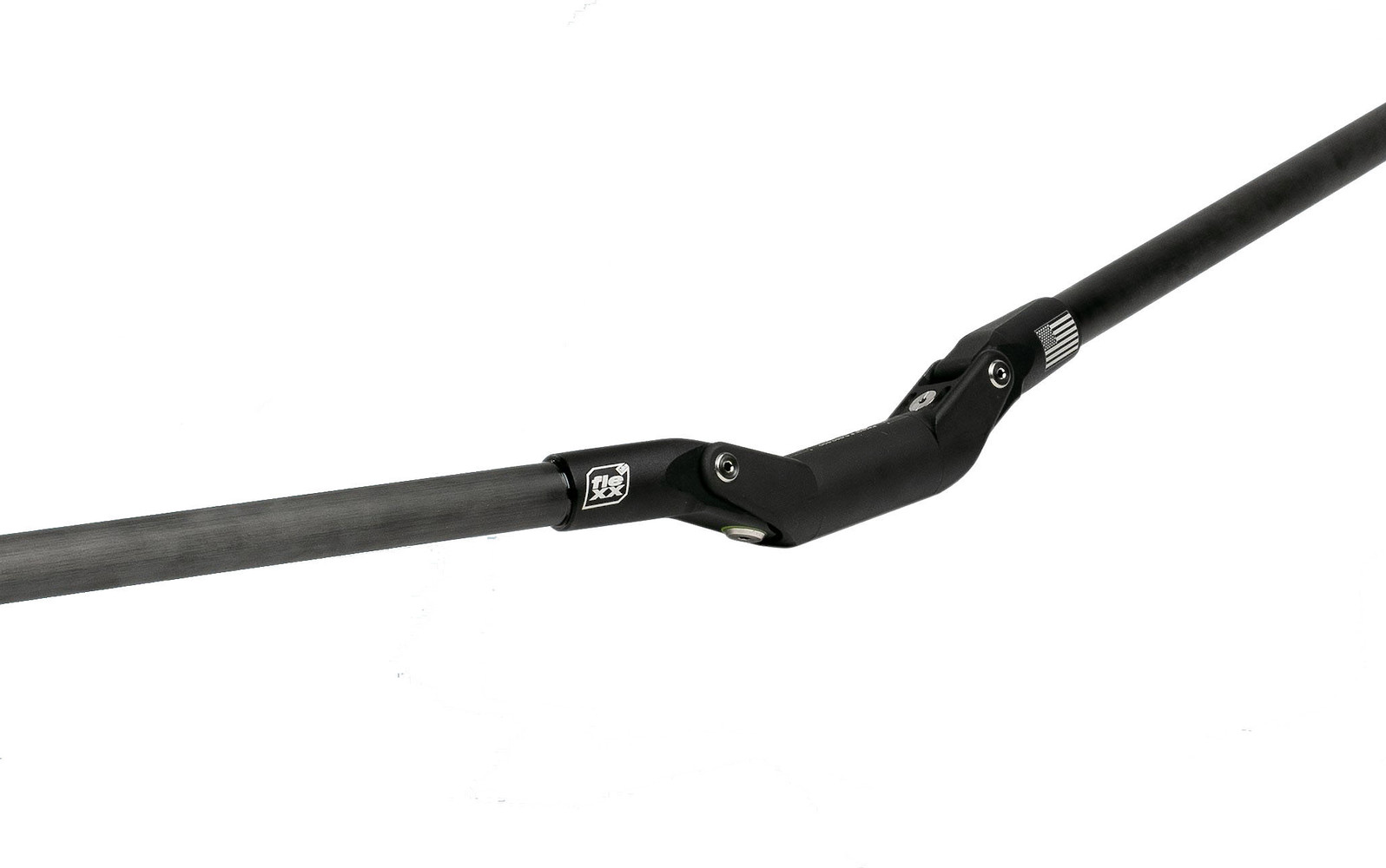



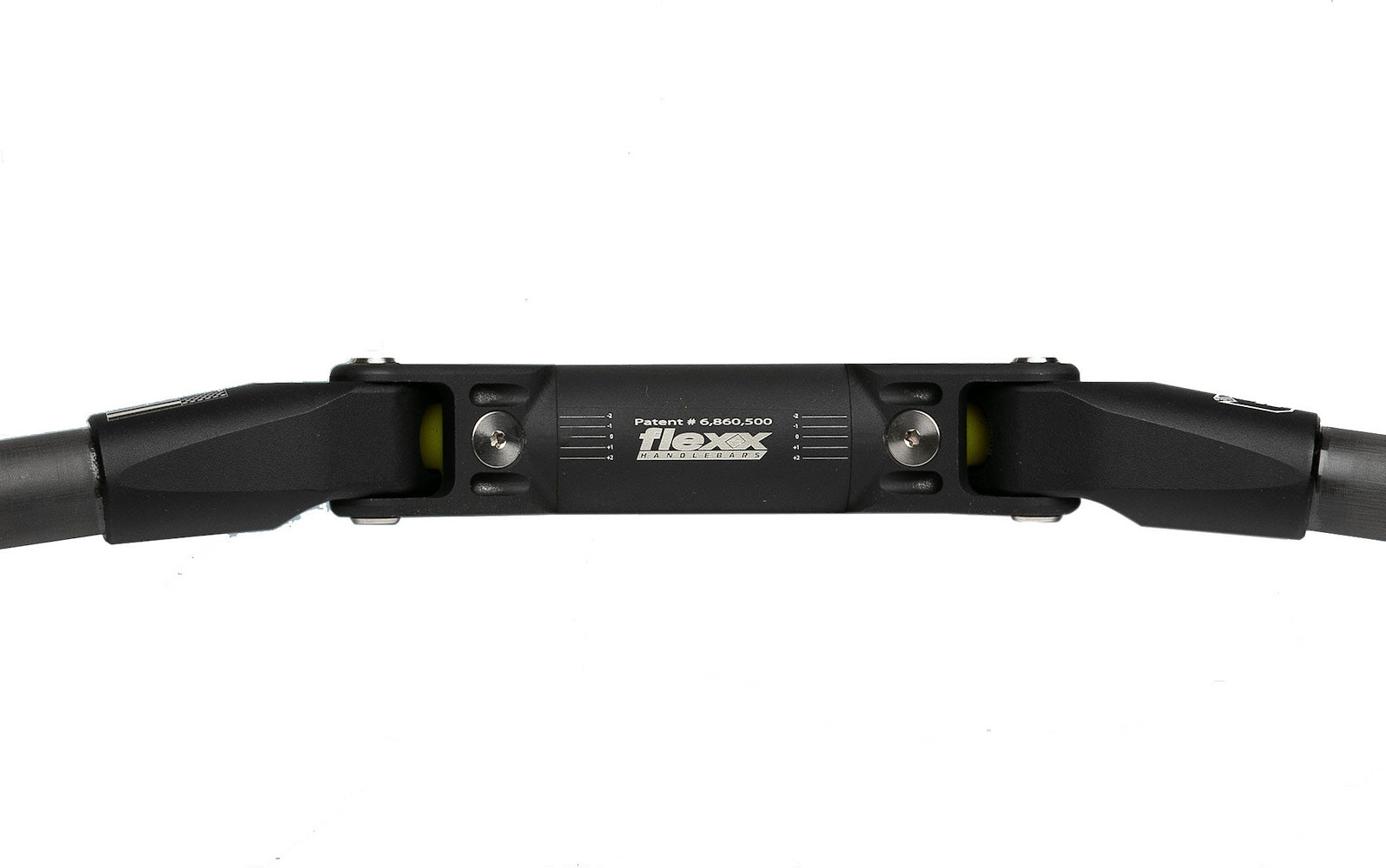




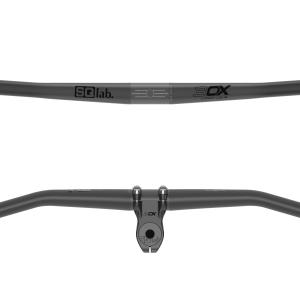
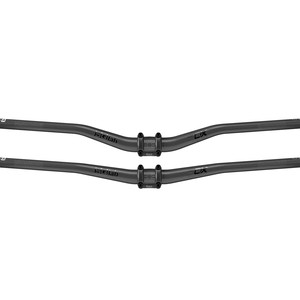
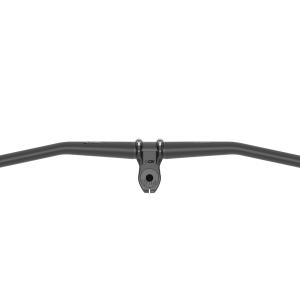














15 comments
Post a reply to: Gimmick or the Real Deal? Fasst Flexx Enduro Bar Long-Term Revie